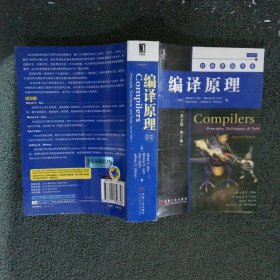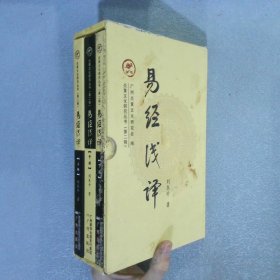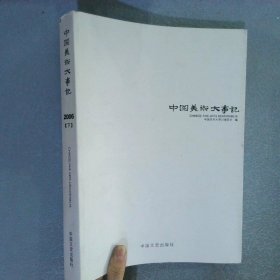
编译原理英文版·第2版
正版书籍 高温消毒 放心购买 15点前订单当天发货 书名于图片不符时以图片为准
¥ 6.82 九品
仅1件
广东东莞
认证卖家担保交易快速发货售后保障
作者[美]阿霍 著
出版社机械工业出版社
出版时间2011-01
版次1
装帧平装
上书时间2024-05-14
- 在售商品 暂无
- 平均发货时间 8小时
- 好评率 暂无
- 最新上架
商品详情
- 品相描述:九品
图书标准信息
- 作者 [美]阿霍 著
- 出版社 机械工业出版社
- 出版时间 2011-01
- 版次 1
- ISBN 9787111326748
- 定价 78.00元
- 装帧 平装
- 开本 32开
- 纸张 胶版纸
- 页数 1009页
- 正文语种 简体中文,英语
- 丛书 经典原版书库
- 【内容简介】
-
《编译原理》是编译领域无可替代的经典著作,被广大计算机专业人士誉为“龙书”。《编译原理》上一版自1986年出版以来,被世界各地的著名高等院校和研究机构(包括美国哥伦比亚大学、斯坦福大学、哈佛大学、普林斯顿大学、贝尔实验室)作为本科生和研究生的编译原理课程的教材。该书对我国高等计算机教育领域也产生了重大影响。
第2版对每一章都进行了全面的修订,以反映自上一版出版二十多年来软件工程、程序设计语言和计算机体系结构方面的发展对编译技术的影响。
《编译原理》全面介绍了编译器的设计。并强调编译技术在软件设计和开发中的广泛应用,每章中都包含大量的习题和丰富的参考文献。《编译原理》适合作为高等院校计算机专业本科生和研究生的编译原理与技术课程的教材,也可供广大计算机技术人员参考。 - 【作者简介】
-
AlfredV.Aho,美国哥伦比亚大学教授。美国国家工程院院士,ACM和lEEE会士,曾获得IEEE的冯·诺伊曼奖。著有多部算法、数据结构、编译器、数据库系统及计算机科学基础方面的著作。
MonicaS.Lam,斯坦福大学计算机科学系教授。曾任T'ensilica的首席科学家,也是Moka5的首任CEO。曾经主持SLJIF项目。
RaviSethi,Avaya实验室总裁。曾任贝尔实验室高级副总裁和LLicentTectlIlologies通信软件的CTO。他曾在宾夕法尼亚州立大学、亚利桑那州立大学和普林斯顿大学任教,是ACM会士。
JeffreyD.UIIman,斯坦福大学计算机科学系教授和GradianceCEO。他的研究兴趣包括数据库理论、数据库集成、数据挖掘和利用信息基础设施教学等。他是美国国家工程院院士、IEEE会士,获得过ACM的Karlstrom杰出教育奖和Knufh奖。 - 【目录】
-
1introduction
1.1languageprocessors
1.2thestructureofacompiler
1.3theevolutionofprogramminglanguages
1.4thescienceofbuildingacompiler
1.5applicationsofcompilertechnology
1.6programminglanguagebasics
1.7summaryofchapter1
1.8referencesforchapter1
2asimplesyntax-directedtranslator
2.1introduction
2.2syntaxdefinition
2.3syntax-directedtranslation
2.4parsing
2.5atranslatorforsimpleexpressions
2.6lexicalanalysis
2.7symboltables
2.8intermediatecodegeneration
2.9summaryofchapter2
3lexicalanalysis
3.1theroleofthelexicalanalyzer
3.2inputbuffering
3.3specificationoftokens
3.4recognitionoftokens
3.5thelexical-analyzergeneratorlex
3.6finiteautomata
3.7fromregularexpressionstoautomata
3.8designofalexical-analyzergenerator
3.9optimizationofdfa-basedpatternmatchers
3.10summaryofchapter3
3.11referencesforchapter3
4syntaxanalysis
4.1introduction
4.2context-freegrammars
4.3writingagrammar
4.4top-downparsing
4.5bottom-upparsing
4.6introductiontolrparsing:simplelr
4.7morepowerfullrparsers
4.8usingambiguousgrammars
4.9parsergenerators
4.10summaryofchapter4
4.11referencesforchapter4
5syntax-directedtranslation
5.1syntax-directeddefinitions
5.2evaluationordersforsdd's
5.3applicationsofsyntax-directedtranslation
5.4syntax-directedtranslationschemes
5.5hnplementingl-attributedsdd's
5.6summaryofchapter5
5.7referencesforchapter5
6intermediate-codegeneration
6.1variantsofsyntaxtrees
6.2three-addresscode
6.3typesanddeclarations
6.4translationofexpressions
6.5typechecking
6.6controlflow
6.7backpatching
6.8switch-statements
6.9intermediatecodeforprocedures
6.10summaryofchapter6
6.11referencesforchapter6
7run-timeenvironments
7.1storageorganization
7.2stackallocationofspace
7.3accesstononlocaldataonthestack
7.4heapmanagement
7.5introductiontogarbagecollection
7.6introductiontotrace-basedcollection
7.7short-pausegarbagecollection
7.8advancedtopicsingarbagecollection
7.9summaryofchapter7
7.10referencesforchapter7
8codegeneration
8.1issuesmthedesignofacodegenerator
8.2thetargetlanguage
8.3addressesinthetargetcode
8.4basicblocksandflowgraphs
8.5optimizationofbasicblocks
8.6asimplecodegenerator
8.7peepholeoptimization
8.8registerallocationandassignment
8.9instructionselectionbytreerewriting
8.10optimalcodegenerationforexpressions
8.11dynamicprogrammingcode-generation
8.12summaryofchapter8
8.13referencesforchapter8
9machine-independentoptimizations
9.1theprincipalsourcesofoptimization
9.2introductiontodata-flowanalysis
9.3foundationsofdata-flowanalysis
9.4constantpropagation
9.5partial-redundancyelimination
9.6loopsinflowgraphs
9.7region-basedanalysis
9.8symbolicanalysis
9.9summaryofchapter9
9.10referencesforchapter9
10instruction-levelparallelism
10.1processorarchitectures
10.2code-schedulingconstraints
10.3basic-blockscheduling
10.4globalcodescheduling
10.5softwarepipelining
10.6summaryofchapter10
10.7referencesforchapter10
11optimizingforparallelismandlocality
11.1basicconcepts
11.2matrixmultiply:anin-depthexample
11.3iterationspaces
11.4aftlnearrayindexes
11.5datareuse
11.6arraydata-dependenceanalysis
11.7findingsynchronization-freeparallelism
11.8synchronizationbetweenparallelloops
11.9pipelining
11.10localityoptimizations
11.11otherusesofaffinetransforms
11.12summarvofchapter11
11.13referencesforchapter11
12interproceduralanalysis
12.1basicconcepts
12.2whyinterproceduralanalysis?
12.3alogicalrepresentationofdataflow
12.4asimplepointer-analysisalgorithm
12.5context-insensitiveinterproceduralanalysis
12.6context-sensitivepointeranalysis
12.7datalogimplementationbybdd's
12.8summaryofchapter12
12.9referencesforchapter12
aacompletefrontend
a.1thesourcelanguage
a.2main
a.3lexicalanalyzer
a.4symboltablesandtypes
a.5intermediatecodeforexpressions
a.6jumpingcodeforbooleanexpressions
a.7intermediatecodeforstatements
a.8parser
a.9creatingthefrontend
bfindinglinearlyindependentsolutions
index
点击展开
点击收起
相关推荐
— 没有更多了 —














以下为对购买帮助不大的评价